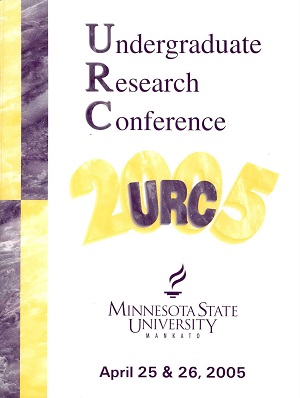Islamica: Creating a Muslim-American Identity
Location
CSU 244
Start Date
25-4-2005 10:30 AM
End Date
25-4-2005 12:00 PM
Student's Major
Communication Studies
Student's College
Arts and Humanities
Mentor's Name
Leah White
Mentor's Department
Communication Studies
Mentor's College
Arts and Humanities
Description
Intertextuality is defined as a textual device in which one text informs another and is used by an author to elicit a specific audience response. Brian Ott and Cameron Walter detailed a humorous approach to intertextuality by looking at three areas: parodic allusion, creative appropriation, and self-reflexive reference. Parodic allusion occurs when one text imitates another and is meant to be humorous. Creative appropriation is seen when one text recreates portions of another text. Creative appropriation is meant to make a statement about the text it recreates; this comment can range from a criticism of a text to a celebration of it. Self-reflexive references are comments or behaviors that draw attention to the fact that element within a text are fictional. This model is applied to the online company Islamica, which was created as an identity-centric company to provide Muslims with a unique, humorous outlet. After application of intertextuality to Islamica, implications regarding the success of Islamica's identity-centric goals are derived; Islamica has created a more contemporary Muslim-American identity among young Muslims. However, in order for an identity to identify a group of people, it must be recognized by those outside the group. Because Islamica is directed only toward Muslims, their identity fails to define them by those on the outside.
Islamica: Creating a Muslim-American Identity
CSU 244
Intertextuality is defined as a textual device in which one text informs another and is used by an author to elicit a specific audience response. Brian Ott and Cameron Walter detailed a humorous approach to intertextuality by looking at three areas: parodic allusion, creative appropriation, and self-reflexive reference. Parodic allusion occurs when one text imitates another and is meant to be humorous. Creative appropriation is seen when one text recreates portions of another text. Creative appropriation is meant to make a statement about the text it recreates; this comment can range from a criticism of a text to a celebration of it. Self-reflexive references are comments or behaviors that draw attention to the fact that element within a text are fictional. This model is applied to the online company Islamica, which was created as an identity-centric company to provide Muslims with a unique, humorous outlet. After application of intertextuality to Islamica, implications regarding the success of Islamica's identity-centric goals are derived; Islamica has created a more contemporary Muslim-American identity among young Muslims. However, in order for an identity to identify a group of people, it must be recognized by those outside the group. Because Islamica is directed only toward Muslims, their identity fails to define them by those on the outside.
Recommended Citation
Thompson, Lindsey R.. "Islamica: Creating a Muslim-American Identity." Undergraduate Research Symposium, Mankato, MN, April 25, 2005.
https://cornerstone.lib.mnsu.edu/urs/2005/oral-session-C/5



